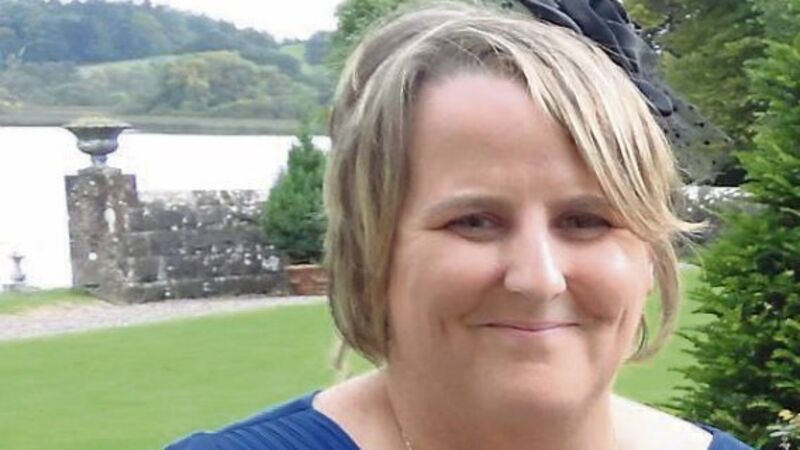‘Wickedness, behind mask of pity’

Real people ‘imagined as victims of vile torture’
The prosecution in the Graham Dwyer trial has said it is not in dispute that the accused was in a sexual relationship with Elaine O’Hara, as he had admitted that by the end of his interviews with gardaí — however, he said the admission wasn’t anything like the full truth so other evidence was important, such as computers, phones and documents.
“That documentary evidence allows you to fill in the detail that might otherwise be lacking,” Seán Guerin said, noting “matters of this nature took place in private” and there were not other witnesses.
He said the significance of CCTV footage was to show the relationship had continued right up to the time Ms O’Hara went missing.
He said the core of the prosecution case came in the form of telephone evidence.
It was the State’s case that three disputed phones, including two found in a reservoir, were bought by the accused, and that Mr Dwyer was using two of them.
He pointed to the fact that Ms O’Hara had saved the number for one of the phones as Graham, both on her computer and in an address book.
He pointed to the name, address and alternative phone number that had been given when this phone was registered. He said the name, Goroon Caisholm, was a corruption of the name, Gordon Chisholm, an acquaintance of Mr Dwyer. The address was similar to Mr Dwyer’s sister’s, but with the same inaccuracy he had given to his wife and gardaí. The phone number used when registering was practically the same as Mr Dwyer’s work phone, apart from the prefix.
“All that evidence tends to connect that phone to Graham Dwyer,” he said.
He said that there were discussions between this phone and Ms O’Hara’s iPhone about the possibility of getting other phones. New 086 phones were purchased in November 2011, and the first two phones soon ceased to communicate with each other. “All the contact then shifts to the non-traceable channel, which shows these were the two phones being used to communicate by these two people.”
Mr Guerin reminded the jury of the times and locations where the phones were topped up, and compared them with Mr Dwyer’s known movements on those occasions.
However, he said the content of the texts was the most striking feature of the telephone evidence for the purpose of connecting them to Mr Dwyer. “What you find is that the record of the texts holds up a mirror to the life of Graham Dwyer. You see exactly what he’s doing and to an extent that would be utterly impossible if it were anyone other than Graham Dwyer using them.”
Mr Guerin said he would address the jury on the basis the ‘master’ phone found in the reservoir and the phone registered to Goroon Caisholm belonged to Mr Dwyer. Given those connections, he said the next question was what Mr Dwyer actually intended on August 22, 2012.
“The prosecution intends to show that there was a firm, clear and determined intention to do certain things, not merely a desire,” he said. “But the desire was there as well and it’s important the prosecution satisfies you as to what it was.”
“I suggest fantasy is, in fact, the expression of a desire, something the person who has that fantasy wishes was real,” he said. “This is about a person who has these extraordinary and quite frankly disgusting fantasies, who goes about making them real. They were longstanding fantasies.”
He reminded the jury of the evidence of Mr Dwyer’s former partner, who said that, in the 1990s, Graham Dwyer’s fantasy was to stab a woman during sex.
“At least three victims were discussed, in the most disgusting terms,” Mr Guerin said. These were Darci Day, Elaine O’Hara, and Rowena Quinn, who, he said, had the misfortune to work in an office across the street from Mr Dwyer’s.
He said the documents the accused had created entitled ‘Killing Darci’ and ‘Jenny’s First Rape’ detailed “the most vile and sickening torture and murder of women”.
“When you look at them, bear in mind that to a significant extent, actual living people he knows in one way or another are imagined as the victims of these obscenities,” he said.
He told the jury to “think very carefully about whether that is fantasy”. He asked whether it was something Mr Dwyer desired and took steps to bring about.
“In relation to Elaine O’Hara, who the prosecution says was his real victim, look back at the relationship,” he said. He suggested the accused had, from the outset, a very particular and limited plan, to use the deceased as a victim for his sexual fantasies.
He pointed to computer evidence showing that in late 2007, Ms O’Hara had viewed the Architect 77 profile on website alt.com. “That suggests it was the likely beginning of the relationship that ended on the side of Killakee Mountain in August 2012.”
Mr Guerin pointed to medical records from June 2008 where Ms O’Hara had told her therapist she was overwhelmed with sadness, loneliness and the belief she was a bad person, who deserved to be punished. “She was a very sad person, undoubtedly a troubled person, troubled by thoughts of her own self worth,” he said.
He said it was a valuable truth that being lonely was worse than almost anything else. He said that people would and did settle for relationships with which they were very unhappy rather than being alone. “I suggest that’s what happened to Elaine O’Hara,” he said.
He pointed to a 2008 email sent to Ms O’Hara from fetishboy@gmail.com, an address linked to the Architect 72 profile. He said the sender, who he said was Graham Dwyer, completely understood that Ms O’Hara needed to stay away from what he was doing to her in order to get better. He said it was an expression of an understanding what he was doing to her was very deeply damaging to her. However, within that email, Fetish Boy had offered to do something she had previously asked him to do. “And you know what that was,” said Mr Guerin. “This wickedness, hiding behind the mask of pity, offering a troubled and sometimes suicidal woman help in the form of a way out.”
Mr Guerin said he would move onto the elements of Mr Dwyer’s alleged plan this morning.
The trial has heard that Ms O’Hara was last seen in Shanganagh on August 22, 2012. Her skeletal remains were discovered at Killakee on September 13, 2013.
The trial continues.












